Over the course of many bottles of wine, a massive heap of empanadas, and a sampling of fernet con coca, the locals were all curious to know how we'd been passing our time in Argentina. We told them we'd been to the MALBA, the Museo de Bellas Artes, and other tourist spots. But when we said that we'd been to a few off-the-beaten-path places, like Parque Rivadavia, they joked that only turistas anti-imperalistas would go to such places. And yeah, maybe that does describe what we've been doing the last few days:
First stop was the Museo de Deuda Externa: a museum dedicated exclusively to the history of Argentina's foreign debt.
 | 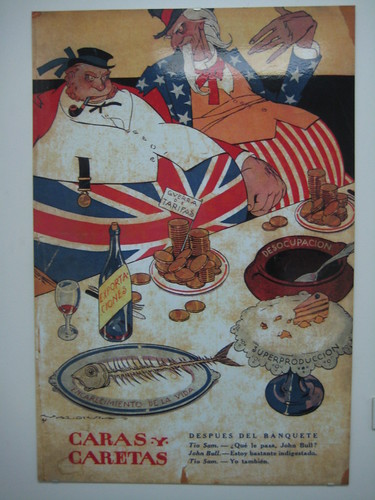 |
Where else can you find art about the Brady Plan?

Or demonstration art about the poverty line?
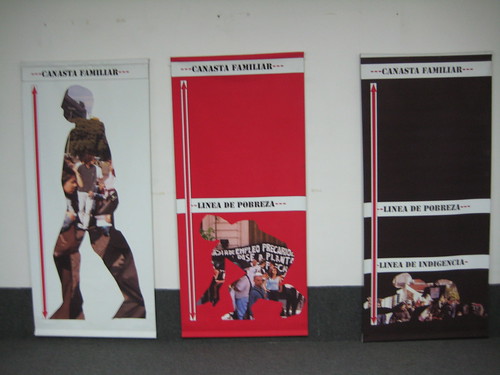
Other exhibits included an "anniversary album" celebrating 50 years since Argentina "wed" itself to the IMF; a series of sculptures about unemployment levels using tiny dolls of San Cayetano, the patron saint of work; and a cascade of the many currencies that Argentina has used over the past few decades. One can only hope that, in the coming years, there will be more anti-IMF museums in the world.
So then we tried to be normal tourists and headed down to San Telmo on Sunday, along with every other foreigner in the country. But soon we strayed down to the sculpture "Canto al Trabajo" by Rogelio Yrurtia:
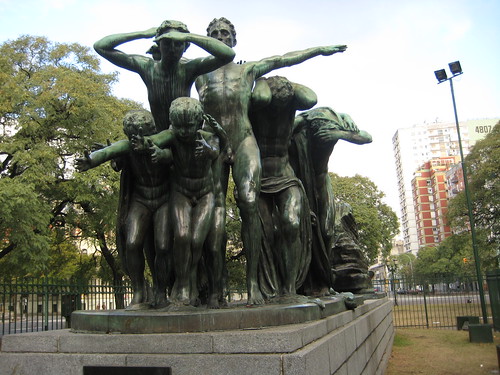
And then down the Paseo de Colon, past Asambleas street art:
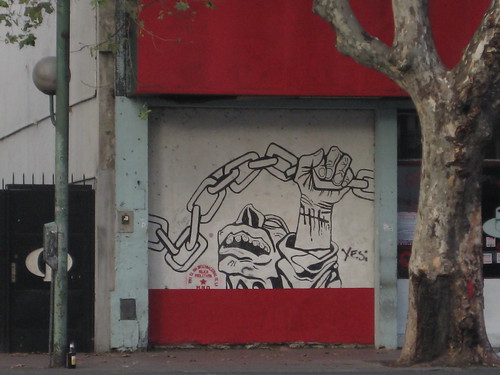
To the Memory Recovery Project of the Secret Detention Facility "El Atlético," an archeological memorial site under a highway overpass.
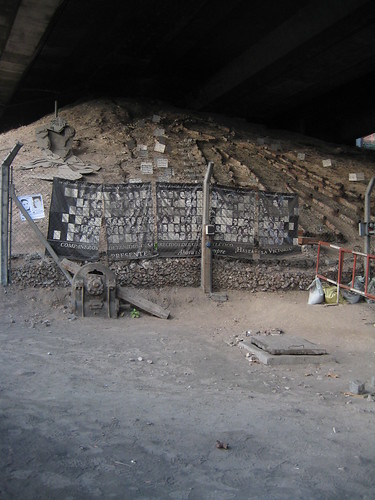
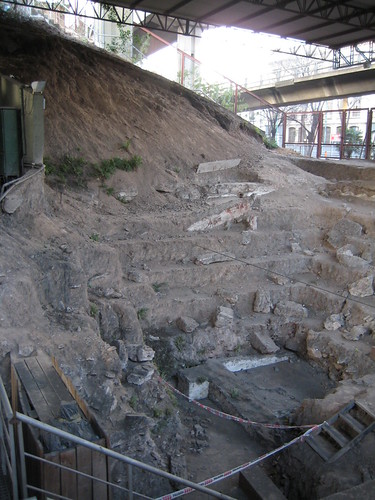
During most of 1977, some 1,800 people were kidnapped and brought here, to a secret torture facility in the basement of an athletic club. Only about 300 survived to tell about it, and, in 1978, the dictatorship demolished the building to make way for the highway, literally burying the secret and the bodies of 1,500 desaparecidos. Only in 2002, after much agitation by human rights activists, was the site unearthed and this memorial created. Later, a more official memorial park was created across the street, but it was closed and locked when we were there. And while the excavation site was very moving, as we stood in the grime, under this overpass, on a huge avenue with little foot traffic, we couldn't help but feel as though this space of memory, indeed, this memory itself, had been forgotten...or at least kept in the dark.
Then it was back up into the San Telmo street market, where we ran into the booths of the Asambleas movement and agoratv.org, where a guy selling radical DVDs knew of NACLA and invited us to visit Hotel BAUEN, a cooperatively run, recuperated hotel.
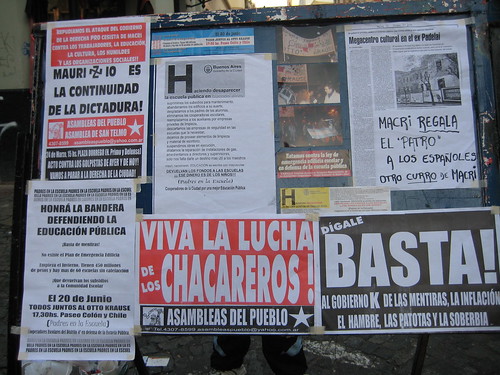
Then today, after a quick jaunt through Chinatown in Belgrano...

(sadly, no coypus de soja to be found)
...we rode up toward the city line to the Escuela de Mecanica de la Armada (ESMA).
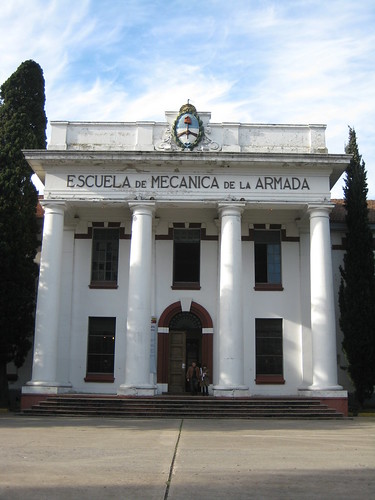
ESMA, a Navy training facility, was the largest detention center during the dirty war, where some 5,000 people were disappeared, with only 200 survivors. In 2004, it became a memorial museum, the Espacio para la Memoria y para la Promoción y Defensa de los Derechos Humanos.

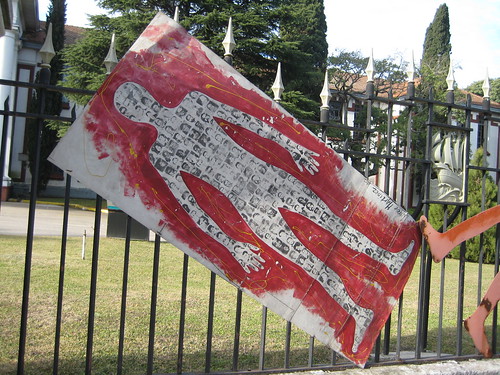
To visit the grounds, we would have had to make an appointment for a guided tour (which we hadn't done), so then we rode out to the river, again, to find the Parque de la Memoria.
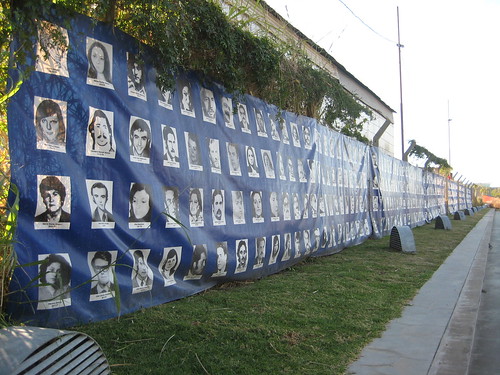
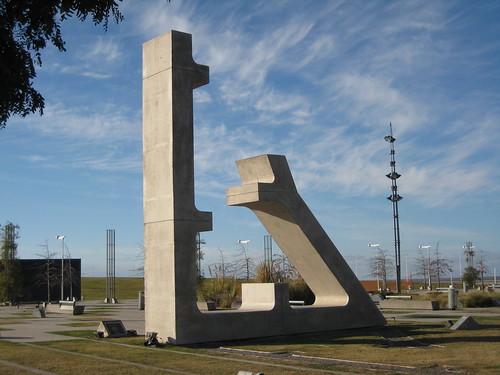 |  |
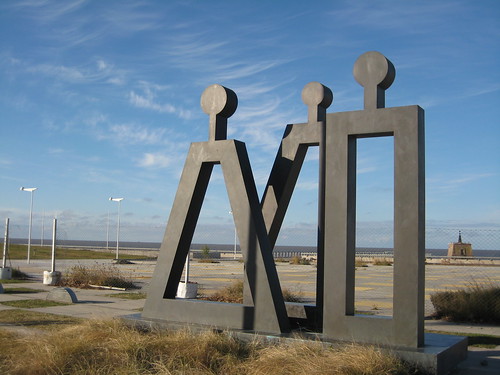 |  |
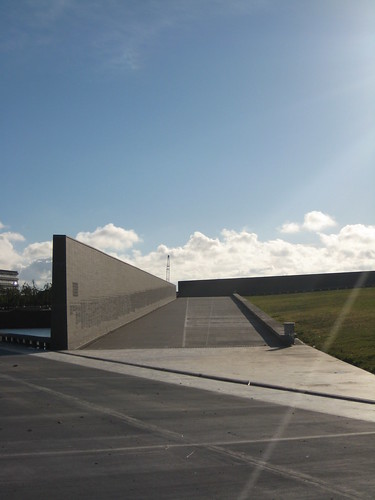
This memorial, the Monument to Victims of State Terror, was inaugurated in late 2007 but is still not open to the public, as much of the park is still under construction (the friendly dreadlocked hippy in the information booth told us it was scheduled to open in August.) The atmosphere was ruined somewhat by the loud and very insistent cat-calls we were getting from the construction workers (Stuart's legs really drive 'em wild), but the site itself is very striking, perched at the northern end of the path along the river's edge.
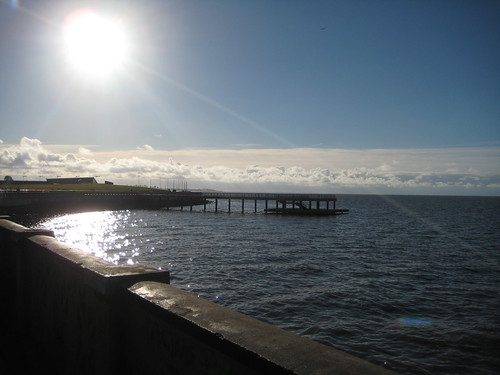
So we rode back home, across the railroad tracks, our brains full of questions about cities, and memory, and activism, and memorialization—reminders of which, in this city, are everywhere....


1 comment:
Beautiful post, thanks for sharing all of these photos...
Post a Comment